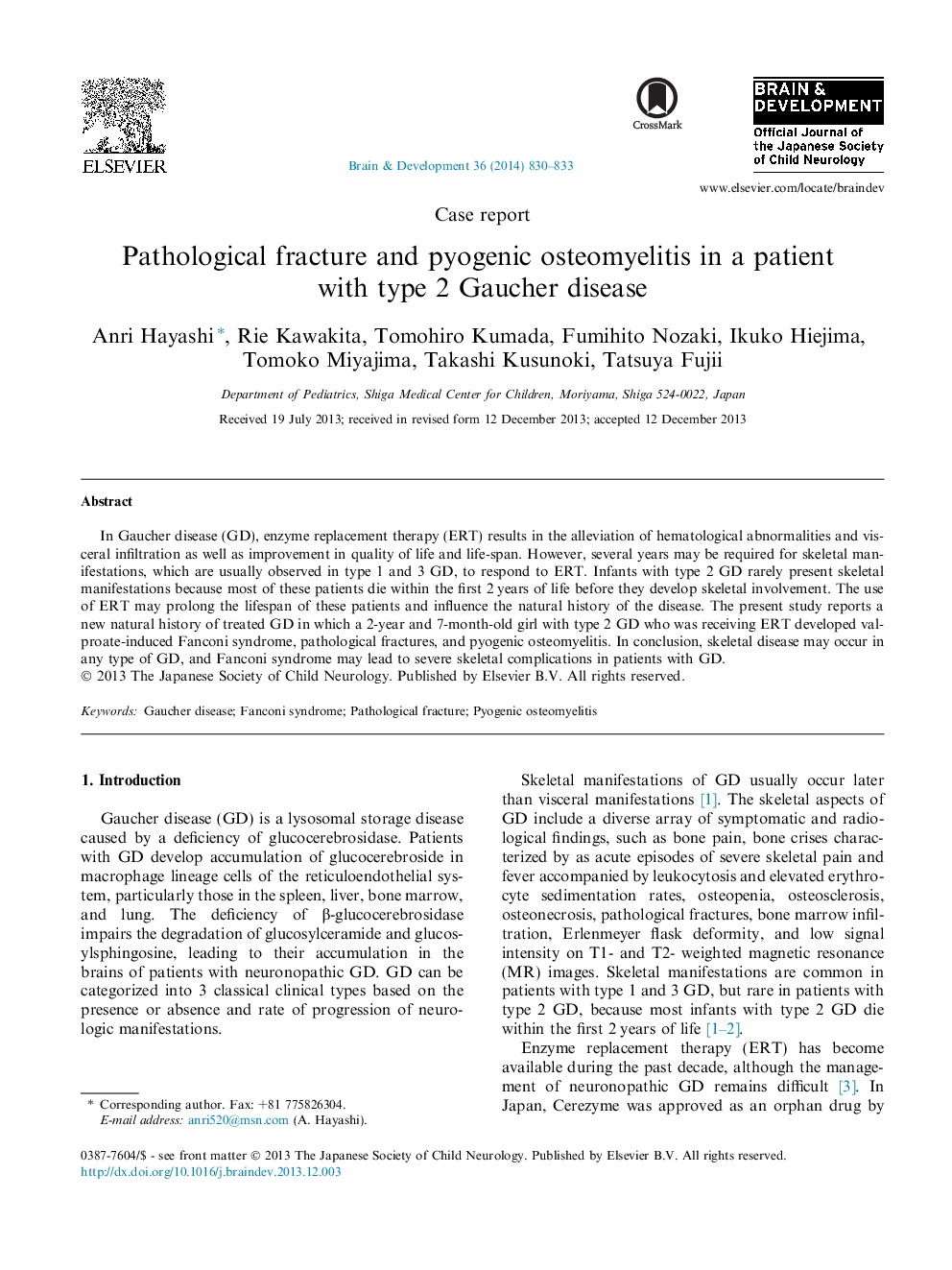| Article ID | Journal | Published Year | Pages | File Type |
|---|---|---|---|---|
| 3036988 | Brain and Development | 2014 | 4 Pages |
In Gaucher disease (GD), enzyme replacement therapy (ERT) results in the alleviation of hematological abnormalities and visceral infiltration as well as improvement in quality of life and life-span. However, several years may be required for skeletal manifestations, which are usually observed in type 1 and 3 GD, to respond to ERT. Infants with type 2 GD rarely present skeletal manifestations because most of these patients die within the first 2 years of life before they develop skeletal involvement. The use of ERT may prolong the lifespan of these patients and influence the natural history of the disease. The present study reports a new natural history of treated GD in which a 2-year and 7-month-old girl with type 2 GD who was receiving ERT developed valproate-induced Fanconi syndrome, pathological fractures, and pyogenic osteomyelitis. In conclusion, skeletal disease may occur in any type of GD, and Fanconi syndrome may lead to severe skeletal complications in patients with GD.
